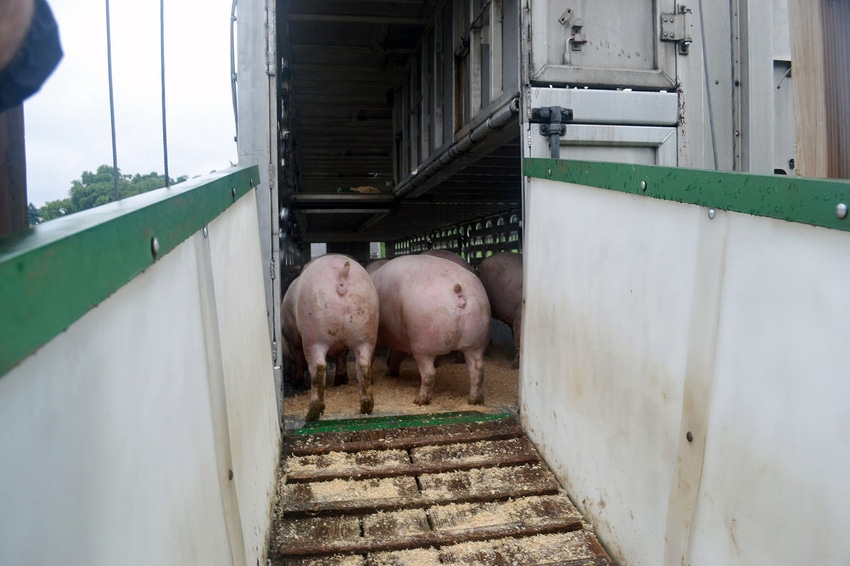When looking at the technical information, historically, on average, the seasonal peak will hit during the second or third week of July. However, cutout typically peaks around the third week of June and continues to push higher due to strong pork belly sales.

I just returned from the annual National Pork Industry Conference, where attendance was up about 10% over last year and this year’s speakers were fantastic as always. Most of the discussions I had with attendees revolved around when this hog market turns and when hogs should be locked up.
With the crop report on the horizon, other concerns and conversations centered on pending drought conditions and late planting dates. However, Joe Kerns’ presentation shifted the uncertainty about increased grain prices to putting corn on trial as being overpriced. A skit putting corn on trial made the point and, at least in the short-term, scores one for the economists as Joe’s pre-report presentation was spot on. Today December futures for corn finished down $0.156 per bushel and beans were down sharply dropping $0.464 per bushel on new crop and closing at $9.87.
Another popular topic that surfaced at the conference was timing of the new plants, Coldwater and Seaboard Triumph Foods. Any major delays during start-up could challenge plant capacity in the swine industry in the fourth quarter.
Is now the time to lock-in profits?
Making marketing decisions is the most difficult part any operation. Being risk adverse myself, I look at the recent drop in crop prices and strong hog markets as an opportunity. Looking at today’s margins, it’s hard to get overly excited when looking at a $10 head profit for the next 12 months or less, depending on your cost structure. It’s even more difficult to lock-in slight losses for the fourth quarter.
I will try to walk you through the pros and cons of locking-in your production now. First, the most recent Hog and Pigs report was neutral, but ended up being bullish in the futures markets. Exports have remained strong, driven by higher-than-expected sales to Mexico. This is driven in part by the value of the peso, which gained about 15% buying power relative to the U.S. dollar since the first of January. Weights continue to be current with strong cash prices and we are on the cusp of adding three new plants that will give us significantly new slaughter capacity with Prime Pork in Windom, Minn., already ramping up. Packer margins also continue to be high for this time of year.
Get more INSIGHT: Download 6 Ways to Manage Risk on your Hog Farm now!
Being a lender, however, I would be remiss if I left out the risks associated in the swine industry in the near- and long-term. I will start with exports. The key has been Mexico, with 30% of all exports sold across the border. However, uncertainty on the North American Free Trade Agreement could have a substantial impact on this relationship going forward. Another unknown today in the export markets will be the hog expansion in China. Currently the European Union fills the most significant needs of China. But as China expands their own production their need for pork from the EU will diminish. This will increase competition between the EU in the rest of the world markets. The newly signed free trade agreements between Japan and the EU will increase the risk of U.S. producers losing ground with our No. 1 value export market, Japan. The significance of this FTA is even greater as the United States just recently pulled out of the Trans-Pacific Partnership agreement. Negotiating bilateral agreements with the member countries of the TPP is vital and needs to happen soon.
When looking at the technical information, historically, on average, the seasonal peak will hit during the second or third week of July. However, cutout typically peaks around the third week of June and continues to push higher due to strong pork belly sales, which hit an all-time high of $2.07. With the uncertainty of startups for three new plants on the horizon and 3.5% to 4% more pork in the pipeline we will need exports to remain strong along with continued growth in domestic demand.
Finally, slaughter weights have me somewhat concerned. Even though the industry seems to be current on weights, it doesn’t appear we are pulling hogs forward like we did last year, which gave the industry the ability to avoid a capacity issue with the packers. If there is any delay with the Coldwater or Seaboard Triumph plants coming online we will have an issue with slaughter capacity. Only time will tell if this needs to be a concern, but we will find out soon!
Malakowsky has more than 20 years of experience with Compeer Financial. For more insights from Malakowsky and the Compeer swine team, visit Compeer.com. If you’d like more information on Compeer’s Margin Manager Tool check it out at Compeer.com/MarginManager.
On July 1, AgStar Financial Services, Badgerland Financial and 1st Farm Credit Services came together to form Compeer Financial, strengthening our commitment to the agricultural community. By combining resources, knowledge and expertise, Compeer Financial will champion the hopes and dreams of rural America like never before.
About the Author(s)
You May Also Like





